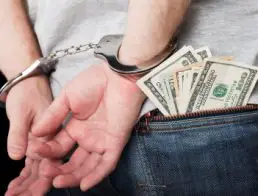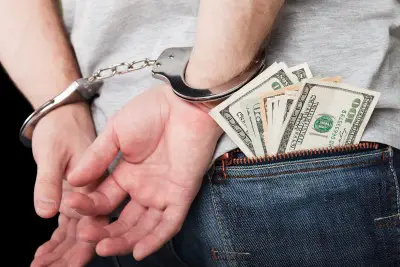Checks are accepted at many businesses today and are an important part of adulthood. In the past, almost everyone who had gone to school knew exactly what to do with a check and a checkbook register by graduation day. However, because credit cards and automatic bill payments are used more often these days, some people are unsure of what to do with a checkbook or what all the numbers on the checks mean. This simple overview will give an individual all the information necessary to complete this process safely.
Why Checks Are Useful
Although many people prefer to use credit cards or even cash to complete their business transactions, there are numerous benefits to having checks. Most major businesses and many individuals will accept checks for services that have been provided.
Checks are particularly useful for sending money through the mail because cash should never be sent. In addition, checks are great for keeping thorough records, particularly if duplicate checks are used. Those who write these checks will always have proof that they made a payment to a business. Canceled check images can also be obtained through the issuing bank for proof of payments.
Items Needed to Write a Check
Of course, the first necessity for being able to write a check is having a checking account. An individual can open a checking account at most banks and credit unions. Fees and regulations vary depending on the bank and the account. Most banks also charge patrons for check blanks. Duplicate checks will cost more than single checks. Checkbook registers are usually included with each box of checks.
After opening the account and depositing money into it, the individual should order these blank checks. Each check will have certain information on it. The individual’s name and address will be listed at the top. Some people opt to have their phone number listed here as well. The top right corner of each check contains the check number. Check numbers run in numerical order. However, when opening an account, the individual may be asked if he wants his checks to start at a certain number. The bottom of the check has a series of numbers. The first nine numbers are the routing number, which indicates the financial institution from which the check came. The next set of numbers is the checking account number.
In addition, a pen and a calculator will be needed. Pencils should never be used to write a check. White-out is not appropriate for checks either. Instead, a blue or black pen is recommended. However, some pens, such as gel pens, may have ink that runs more easily than others do. Some office supply stores sell pens that are particularly designed for fraud prevention when writing checks and signing legal documents. Calculators are good for using when balancing a checkbook register and when inputting new check amounts into the register.
Steps in Writing a Check
The first step in writing a check is to record the date on the line at the top right-hand corner. It is not good practice to post-date checks. Post-dating means to write in a future date. Many businesses do not accept these checks, and other businesses still deposit these checks before the date that was written.
The second step is to fill in the line marked “Pay to the Order of.” This is where one would write the name of the business or individual to whom the check is going. Checks to individuals should include the person’s first and last names. If writing a check to more than one individual, such as to a married couple, individuals should be aware that both people will need to sign the check before they are able to cash it.
Third, the amount of money should be filled out on the check. The first place to write this amount is in the box to the right of the recipient’s name. This box should contain only numerals and a decimal point but no words. Next, on the line underneath the recipient’s name, the amount of the check should be written in words. The amount of cents in the check should be written as a fraction. The bottom number of the fraction is always 100. A straight line should follow the fraction to fill up the rest of the writing space.
Fourth, the check should be signed. It is best to sign one’s name exactly as it is written at the top of the check. For example, middle initials may be used. However, the check should never be signed until all of the previous steps are completed. A signed but otherwise blank check can be very dangerous in the wrong hands.
Finally, check writers may wish to fill in the memo line. This line, located on the bottom left side of the check can have any information written on it. For example, some may wish to write a business account number here or may wish to write a note to themselves about what they purchased with the check. After writing a check, the check information, including check number, the recipient and the amount, should be entered in the register.
Additional Tips for Writing Checks
A few additional tips can make check writing an easier and safer practice. Those sending checks through the mail should always use security envelopes so that others will not be able to see the check. In addition, before writing a check, individuals should be certain that they have adequate funds in their account; overdraft fees or fees for writing a bad check are typically quite steep.
Many students learn to write checks in junior high or high school. However, those who have not learned this skill previously will find these tips easy to understand. It is vital to know how to write a check because checking accounts remain a strong part of personal and business finance.
http://www.wikihow.com/Write-a-Check
http://banking.about.com/od/checkingaccounts/ig/How-to-Write-a-Check/
http://www.enchantedlearning.com/economics/checks/
http://www.immihelp.com/newcomer/writing-a-check-tips.html
http://www.columbia.edu/cu/isso/visa/F-1/How_to_Write_a_Check.pdf
http://themint.org/kids/writing-a-check.html
http://howtowrite.weebly.com/how-to-write-a-check.html
http://69.0.254.19/wwMS/english/InfoBooth/031.htm
http://www.nyc.gov/html/ofe/html/save/write.shtml
https://www.bankucb.com/home/diFiles/skins/default/kids/kids-check-bank.html





